Embracing the Green Side: A Meat-Eater’s Journey Through Vegetarian Week

National Vegetarian Week is typically celebrated on the third week of May to promote a vegetarian diet and a plant-based lifestyle. This year, Vegetarian Week will be held between the 15th to 21st of May and will have a clear focus on the climate crisis and how introducing more vegetarian meals into our diet can have a great impact on our carbon footprint.
The History of Vegetarian Week
The origins of Vegetarian Week date back to the 19th century when the first Vegetarian Society was established in the UK. This organisation was formed to promote the benefits of a meat-free diet, and it played a crucial role in shaping the country's vegetarian movement. Over the years, Vegetarian Week grew in popularity, and it was celebrated in different parts of the world. In the UK, it became a national event in 1992.
Today, National Vegetarian Week is a significant event with hundreds of activities taking place across the country. Restaurants and food businesses offer special vegetarian and vegan menus, there are cooking demonstrations, workshops, and talks on topics related to plant-based diets.
A Breakdown of My Week As a Vegetarian
Vegetarian Week is a great opportunity to explore the benefits of a vegetarian lifestyle. As a meat eater, I decided to take on the challenge of going vegetarian for one week ahead of Vegetarian Week to see how it would impact my life. Here’s how it went.
Day 1:
My first day as a vegetarian was not as difficult as I expected. I started the day with a hearty breakfast of scrambled eggs, spinach, and avocado on whole-grain toast. For lunch, I had a vegetable stir-fry with rice, and dinner was a vegetarian chilli made with beans and vegetables.
Since I wasn’t used to going an entire day without meat, I thought the first day would be a lot more difficult than it was. Although I knew there was no meat in my meals, My body did not feel any different after the first day was over.
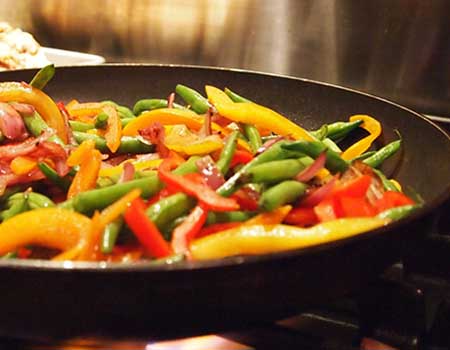
Day 2:
I woke up feeling great, and my energy levels were high. For breakfast, I had porridge with berries, and for lunch, I had a quinoa salad with roasted vegetables. Dinner was a delicious mushroom and lentil shepherd's pie.
By the end of the day, I expected my energy level to drop; however, my body felt no different than it usually does. I was excited to plan another day of vegetarian meals as I was pleasantly surprised by how much I was enjoying my meat-free meals over the last two days.
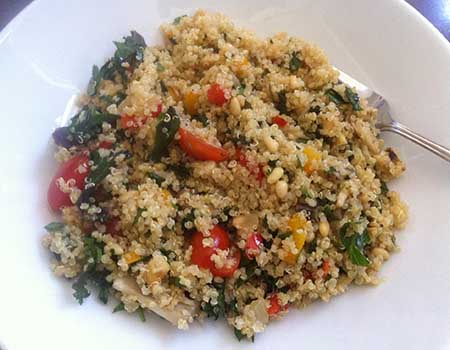
Day 3:
I had a busy morning on day 3, but being vegetarian didn't stop me from staying fueled. Breakfast was a banana smoothie with spinach and almond milk, and lunch was a cheese and advocado sandwich. Dinner was a simple but tasty lentil soup.
On day 3, I noticed the importance of meal prep! Since my morning was so busy, I was tempted to pick up a drive-thru breakfast muffin and call quits on my vegetarian efforts; but having my smoothie ingredients ready in a ziplock bag in the fridge saved me so much time and allowed me to still have a nutritious vegetarian breakfast, even while being short on time.
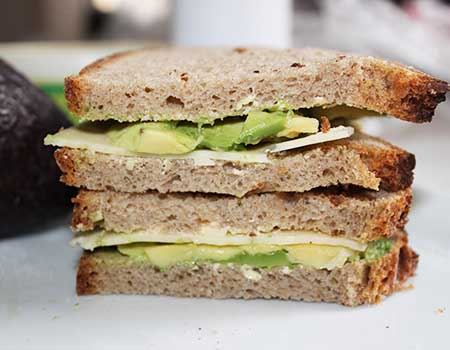
Day 4:
For breakfast, I had Greek yoghurt with fruit and granola, and for lunch, I had a black bean and sweet potato burger with a side salad. Dinner was a vegetable curry with basmati rice.
I was surprised to find that despite being tempted by the drive-thru the day before, I didn't miss meat as much as I thought I would. This only motivated me to keep going as I planned my vegetarian meals for the next day.
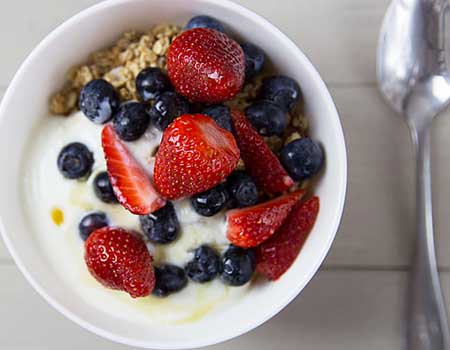
Day 5:
I felt like I had hit my stride as a vegetarian. Breakfast was a tofu scramble with vegetables, and lunch was a quinoa and roasted vegetable bowl. Dinner was a vegetarian lasagna made with aubergine and courgette.
Although I was enjoying my vegetarian meals and woke up feeling energetic and positive about my vegetarian journey, I was running out of recipe ideas by the end of day 5. I was getting a better understanding of the foods I enjoyed more than others; however, I was also conscious of the increasing pile of leftover veg that was growing at the back of my fridge. I decided to use them all the next day before they went bad.
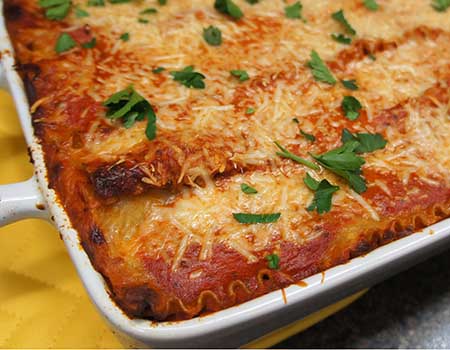
Day 6:
For breakfast, I made sure to use up all my leftover vegetables by chopping them all up and adding them to my breakfast omelette. For lunch. I used the remainder of my leftover veg as a salad and pan-fried some crispy tofu. In the evening, I was invited to a barbecue but was able to find plenty of vegetarian options, including grilled vegetable skewers and portobello mushroom burgers.
This was my first time trying to incorporate my new vegetarian diet into a social gathering where everyone else would be eating meat. I was worried I’d be tempted by the sight of meat and by the lack of vegetarian options. I let the hosts know about my vegetarian journey beforehand and they assured me they would have plenty of vegetarian options for me to choose from. It was nice to not worry about eating meat at social events.
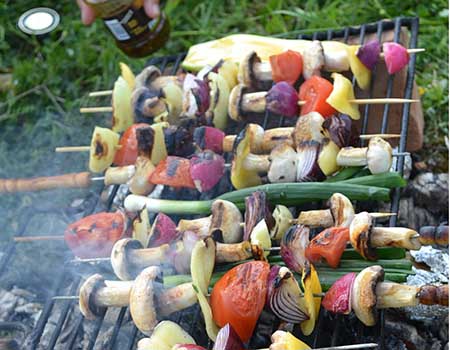
Day 7:
This was my last day as a vegetarian, and I felt proud of myself for sticking with it. For breakfast, I had a smoothie bowl with fruit and granola, and for lunch, I had a spinach and feta omelette. For dinner, I made a vegetable and lentil curry.
Overall, my week as a vegetarian was a success. I felt more energised than usual, and I discovered new foods and recipes that I plan to incorporate into my diet. I also realised that being a vegetarian doesn't mean sacrificing flavour or variety in your meals. If anything, it allows for more creativity in the kitchen.
One thing I struggled with was thinking of new and exciting recipes to try. Luckily, Vegetarian Society has lots of easy and creative recipes that allowed me to try new things. I encourage anyone who is interested in trying a plant-based diet to give it a try, even if just for a week or a day and see how it makes you feel.
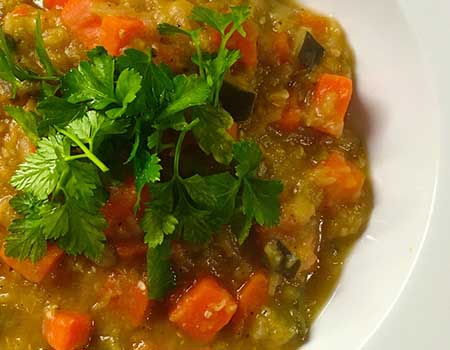
Tips to Participate in Vegetarian Week
Vegetarian Week is a fantastic opportunity for restaurants and cafes to showcase their plant-based offerings and cater to the growing demand for vegetarian and vegan options. By participating in Vegetarian Week, you can attract a new customer base, highlight your commitment to sustainability and healthy eating, and promote your brand as an innovative and inclusive business.
Here are some tips for restaurants looking to participate in Vegetarian Week:
Create a vegetarian menu
Design a dedicated vegetarian menu that includes a wide range of options to suit different tastes and preferences. Don't just offer salads as the only vegetarian option; be creative and offer vegetarian versions of popular dishes such as burgers, pizzas, and tacos. Use fresh, seasonal ingredients and experiment with different flavour combinations to create unique and delicious dishes.
Highlight your vegetarian options
Make sure your vegetarian options are clearly labelled and visible on your menu. You could also create a separate vegetarian menu or a special Vegetarian Week menu to draw attention to your plant-based offerings. Use eye-catching graphics and descriptions to entice customers to try your vegetarian dishes.
Use sustainable and ethical ingredients
Choose ingredients that are sustainably sourced, local, and organic wherever possible. This not only supports local farmers and reduces your carbon footprint but also appeals to customers who are conscious about the environmental impact of their food choices.
Promote your participation in Vegetarian Week
Use social media, email newsletters, and other marketing channels to promote your participation in Vegetarian Week. Let your customers know about your special Vegetarian Week menu and encourage them to share their plant-based dining experiences on social media using your restaurant's hashtag.
Cooksmill’s Vegetarian Essentials
By participating in Vegetarian Week, restaurants and catering companies can showcase their commitment to healthy eating, sustainability, and inclusivity. Cooksmill offers a wide range of essential equipment to help you get started with your participation in Vegetarian Week. Here are just a few of them:
- Vegetable Preparation Machines: These machines are a great addition to your kitchen if you want to introduce more vegetarian-friendly dishes to your menu. They offer speed, consistency, and efficiency when it comes to slicing, dicing, or grating your vegetables, saving you time and effort to create some of the best vegetarian dishes for your customers.
- Removable ‘Suitable for Vegetarians’ Label: Offering vegetarian options on your menu is a great step towards creating a more inclusive menu, but it’s also important to ensure that potential customers are aware that you offer vegetarian-friendly dishes. These removable labels can be placed on your windows and walls to inform people that you offer vegetarian dishes.
- Porcelite Oven to Tableware Crockery: Some of the most popular vegetarian dishes include vegetable lasagne, pasta bakes, casseroles and veggie shepherds pie. Our range of Porcelite Oven to Tableware Crockery is a stunning collection of oven proof dishes that can be used to bake and serve these popular vegetarian dishes in an elegant and stylish way.

At Cooksmill, we offer a wide range of catering equipment that is suitable for creating exciting new vegetarian dishes for your menu. From veg preparation machines to roasting dishes, we have everything in stock to take your menu to the next level. If you want to learn How To Roast Vegetables for Maximum Flavour, take a look at our helpful guide.
Sign Up For Cooksmill's Newsletter
Receive all the latest offers, competitions, new products, and current blogs.
